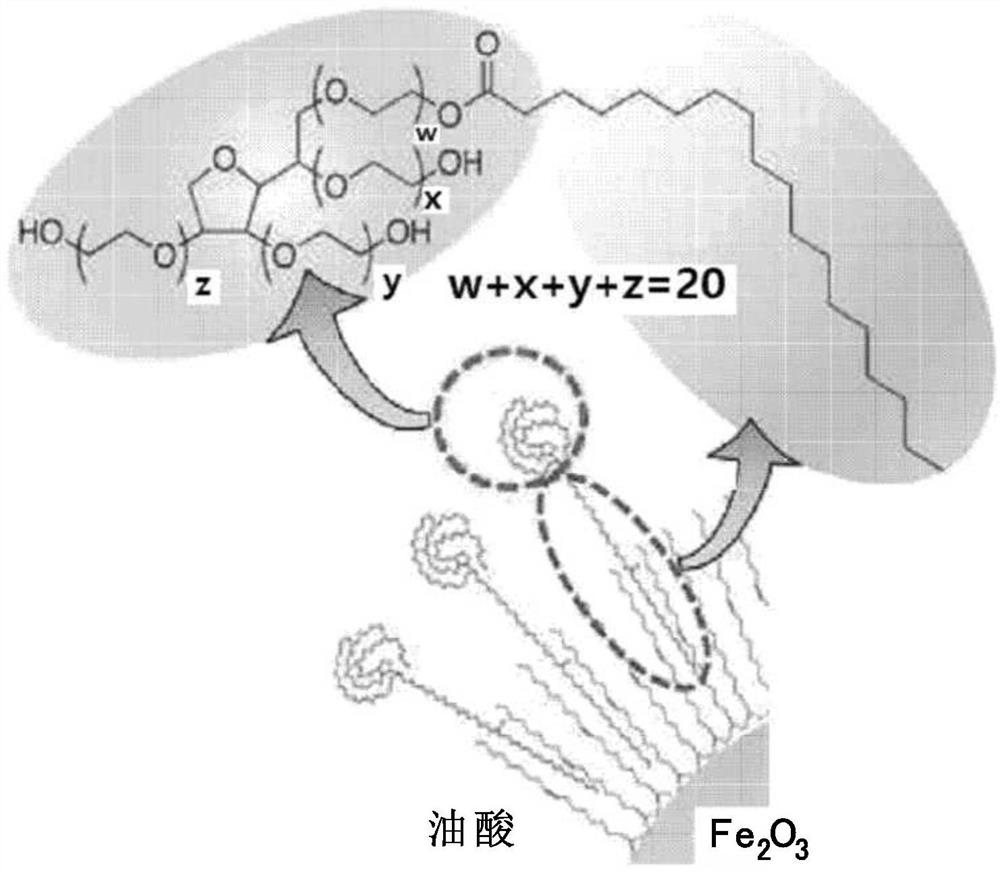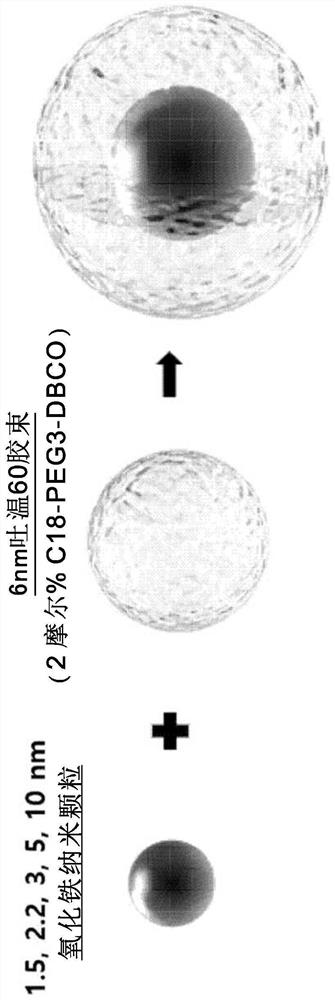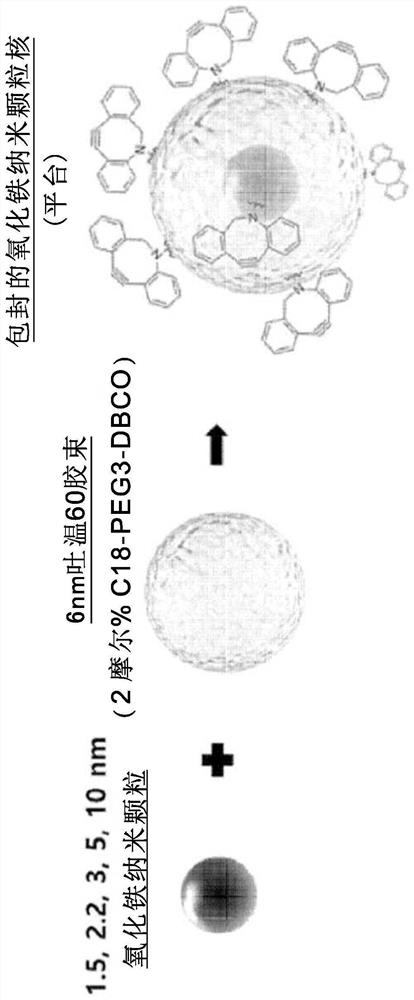Ultrafine iron oxide nanoparticle-based magnetic resonance imaging T1 contrast agent
A technology of iron oxide nanometer and magnetic resonance imaging, which is applied in the direction of nanomagnetism, nanotechnology for materials and surface science, nanotechnology, etc., and can solve problems such as T2 weighted image signal interference
- Summary
- Abstract
- Description
- Claims
- Application Information
AI Technical Summary
Problems solved by technology
Method used
Image
Examples
Embodiment 1-1
[0080] Example 1-1: Preparation of 3nm ultrafine iron oxide nanoparticles
[0081]1.8 g (2 mmol) iron oleate, 0.57 g (2 mmol) oleic acid and 1.61 g (6 mmol) oleyl alcohol were mixed with 10 g diphenyl ether. The mixture was placed in a round bottom flask. The flask was evacuated at 80°C for about 1 hour to remove air. Thereafter, an inert environment was created under argon flow. The reaction was performed while increasing the temperature to 250°C at a rate of 10°C / min. The color of the reaction mixture turned black as the reaction proceeded. Reacting at 250°C for 30 minutes gave 3 nm nanoparticles, which were rapidly cooled and washed with excess acetone. The obtained precipitate was dispersed in chloroform or hexane as an organic solvent.
Embodiment 1-2
[0082] Example 1-2: Preparation of 5nm ultrafine iron oxide nanoparticles
[0083] 1.8 g (2 mmol) iron oleate and 0.28 g (1 mmol) oleic acid were mixed with 10 g octadecene. The mixture was placed in a round bottom flask. The flask was evacuated at 80°C for about 1 hour to remove air. Thereafter, an inert environment was created under argon flow. The reaction was carried out while raising the temperature to 317°C at a rate of 10°C / min. The color of the reaction mixture turned black as the reaction proceeded. The reaction was carried out at 317°C for 30 minutes to obtain about 5 nm nanoparticles, which were rapidly cooled and washed with excess acetone. The obtained precipitate was dispersed in chloroform or hexane as an organic solvent.
Embodiment 1-3
[0084] Example 1-3: Preparation of 10 nm ultrafine iron oxide nanoparticles
[0085] 1.8 g (2 mmol) iron oleate and 0.28 g (1 mmol) oleic acid were mixed with 10 g octadecene. The mixture was placed in a round bottom flask. The flask was evacuated at 80°C for about 1 hour to remove air. An inert environment was created under a stream of argon. The reaction was carried out while raising the temperature to 315°C at a rate of 10°C / min. The color of the reaction mixture turned black as the reaction proceeded. Reacting at 315°C for 30 minutes gave about 10 nm nanoparticles, which were rapidly cooled and washed with excess acetone. The obtained precipitate was dispersed in chloroform or hexane as an organic solvent.
PUM
| Property | Measurement | Unit |
|---|---|---|
| diameter | aaaaa | aaaaa |
| diameter | aaaaa | aaaaa |
| particle diameter | aaaaa | aaaaa |
Abstract
Description
Claims
Application Information
 Login to View More
Login to View More - R&D
- Intellectual Property
- Life Sciences
- Materials
- Tech Scout
- Unparalleled Data Quality
- Higher Quality Content
- 60% Fewer Hallucinations
Browse by: Latest US Patents, China's latest patents, Technical Efficacy Thesaurus, Application Domain, Technology Topic, Popular Technical Reports.
© 2025 PatSnap. All rights reserved.Legal|Privacy policy|Modern Slavery Act Transparency Statement|Sitemap|About US| Contact US: help@patsnap.com



